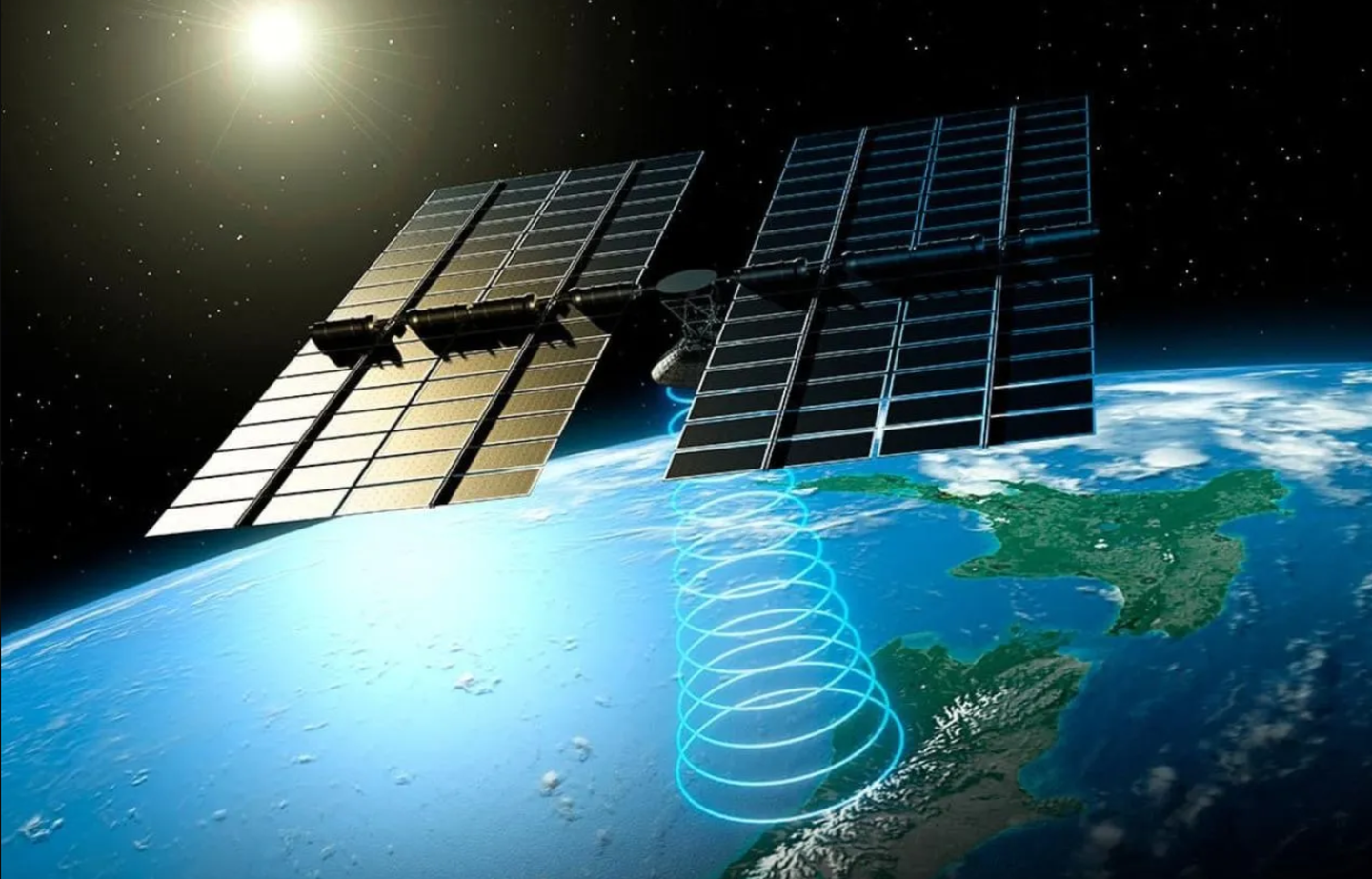Solar power from space could help Europe reach net-zero emissions by 2050
Europe could save billions and cut emissions with space solar power by 2050, according to a new study.

Space-based solar power could cut Europe’s need for land-based renewables by up to 80%. (CREDIT: Science Photo Library / Getty Images)
A future where your lights, phone, and even entire cities are powered by sunlight collected in orbit may not be far-fetched. A new study published in Joule suggests that Europe could one day tap into solar energy gathered from space to help meet its ambitious goal of reaching net-zero emissions by 2050.
Instead of relying solely on wind farms and ground-based solar panels, scientists have modeled what would happen if giant arrays of solar collectors were launched into orbit, where they could gather sunlight without interruption and beam the energy back down to Earth. The results hint that this space-age idea could make Europe’s energy system cheaper, more reliable, and more sustainable.
From Science Fiction to Policy Planning
The concept of collecting solar energy in space isn’t new. It was first proposed in 1968, but remained out of reach for decades. Advances in technology are now bringing it closer to reality, and several countries—including China, Japan, India, Russia, the United States, and the United Kingdom—are investing in research.
What sets this study apart is its integration of space-based solar power into real-world energy planning models. For the first time, researchers tested how orbiting solar panels could fit into Europe’s power grid. By simulating future scenarios for the year 2050, they examined cost, efficiency, and how space energy might blend with other renewable sources.
Professor Wei He, senior lecturer at King’s College London and lead author of the paper, explained: “For the first time we have shown the positive impact this technology could provide for Europe. Although the feasibility of this technology is still under review, our research highlights its vast economic and environmental potential if adopted.”
Two Designs, One Bold Idea
The engineers focused on two designs inspired by NASA. The first, called the Innovative Heliostat Swarm, uses a cluster of movable mirrors that can track the sun continuously. The second, known as the Planar Array, is simpler—a flat surface that collects sunlight only part of the time.
Related Stories
- Solar cells made from moon dust could power future space missions
- Laser beams could power our cities from space by 2050
The difference in performance is striking. The Heliostat Swarm can capture sunlight almost nonstop, while the Planar Array works about 60% of the time. By comparison, ground-based panels manage only 15–30% efficiency because of night, weather, and seasonal changes.
Both designs would send energy wirelessly to Earth-based stations, where it would be converted into electricity and fed into the grid. Unlike traditional solar panels, space collectors wouldn’t be affected by cloud cover, storms, or even natural disasters like floods and earthquakes.
Putting the Models to the Test
To see how these systems might work in practice, researchers simulated Europe’s energy system in 2050. They calculated how much energy each design could supply, what it would cost, and how it would interact with other renewable technologies such as wind, hydropower, batteries, and hydrogen storage.
The models showed that the Heliostat Swarm stood out. It could lower system costs by 7% to 15%, reduce the need for massive battery storage by over 70%, and replace as much as 80% of the power otherwise expected from land-based solar and wind. That could translate into savings of around €35.9 billion every year across Europe’s energy system.
The simpler Planar Array didn’t perform as well in cost or efficiency. Still, it offers a realistic starting point, since it is closer to being ready for deployment. Scientists see it as a stepping-stone toward the more ambitious swarm design.
The Price Problem
There is, however, a major challenge: cost. Right now, space-based solar remains far more expensive than Earth-based options. For the Heliostat Swarm to become viable, costs would need to fall to about 14 times that of future ground-based solar panels. The Planar Array would need to reach about nine times that cost. Currently, estimates suggest these systems are between 10 and 100 times more expensive than those targets.
That means huge reductions are necessary before orbiting solar panels can compete in the market. Lower launch costs, advances in materials, and robotic assembly in space are all expected to help close the gap, but progress must be rapid.
Why Space Solar Power Matters
With Europe committed to net-zero emissions by 2050, renewable energy must expand quickly. But even as wind and ground-based solar grow, they face challenges like intermittency, storage needs, and vulnerability to weather. Energy gathered in orbit could fill those gaps, delivering round-the-clock clean power.
The study also stresses the importance of pursuing both designs in parallel. The simpler array could be tested sooner, proving key technologies and building momentum. Meanwhile, improvements in the more advanced swarm design could prepare it for long-term deployment.
Researchers also call for international coordination, since deploying space-based solar will raise questions of policy, safety, and orbital management. Beaming energy to Earth requires efficient wireless transmission, protection against space debris, and plans for safely retiring systems at the end of their lifespan.
Looking Ahead
The study was supported by the Royal Academy of Engineering and UK Research & Innovation, signaling that the idea is being taken seriously at high levels. Next steps include large-scale demonstrations of wireless energy transmission, advances in robotic space construction, and studies on how to keep orbital systems safe from damage caused by radiation or micrometeoroids.
Despite the hurdles, the message is clear: solar power from space is no longer just a dream. With cost reductions, policy support, and continued technological breakthroughs, it could become a cornerstone of Europe’s clean energy future.
Space-based solar power could cut Europe’s need for land-based renewables by up to 80%, while reducing battery storage demands by more than two-thirds.
If costs can be brought down, the technology may save tens of billions of euros annually, strengthen energy security, and provide a resilient power source immune to weather and natural disasters.
In the long run, these systems could help nations worldwide accelerate their shift to clean energy and meet climate targets more reliably.
Note: The article above provided above by The Brighter Side of News.
Like these kind of feel good stories? Get The Brighter Side of News' newsletter.



